#and it represents gloom and liminality
Explore tagged Tumblr posts
Text
It sucks so much that One mediocre book series has ruined the word “Twilight” forever, despite it being such a beautiful and evocative word
#soli soliloquies#it’s one of those words that just Sounds whimsical#and it represents gloom and liminality#bringing to mind misty moors and the moon and stars starting to show up#but no if you bring it up people will be thinking of That One Thing
0 notes
Text
The Unsleeping City Chapter Two and Kitchen by Banana Yoshimoto
Ally Beardsley said, "I get her Kitchen, that really old book" and I perked up a little bit because I know a book called Kitchen, a niche one that I have analytical thoughts about and love as a piece of art and have never heard anyone mention outside of the class wherein I read it. And then they said "it has this really cool trans character in it," and I had to pause the video to scream about this, because the book I know does in fact have a cool trans woman in it. Her name is Eriko. When I had calmed down enough, I pressed play again and Ally Beardsley said "It's by this writer Banana Yoshimoto" and that is as far as I am into that episode because at that confirmation I had to stop and scream again.
Kitchen, the novella, is made of two different pieces: "Kitchen," about short-novel length by itself, and "Moonlight Shadow," a much shorter story. Both stories are about grief, isolation, connection, and food. Notably, both stories start with the main characters already in mourning, their loved ones already dead. We enter their world as one that is notably empty. This parallels the setting of season two, which opens with introductory scenes that still keenly feel Kugrash's absence.
I have been thinking about Kitchen through this entire season, which is part of why I got so excited when Ally Beardsley mentioned it. Kitchen is a book about grief and grieving and relying on others in your time of need to help you and care for you and give you food. Yoshimoto uses light and dark imagery not as symbols of good and evil, but rather of isolation and connection. Multiple times, she brings us the image of distinct points being connected by light in a dark void, including the main character looking up at the moon in a dark sky and, in one of the closing images of "Kitchen," a lighthouse tracing a road of light across black waves. When our narrator meets one of the people who will become her new household, she sees "in the black gloom before my eyes...a straight road leading from me to him" (Yoshimoto 6-7) (I don't have my book with me but I did find one of my old essays about it :) ). The darkness in these images is that which is not known, that which the characters cannot see through, which is why it represents isolation. They do not have knowledge or connection to that place, even though they may in the future. That way, the imagery is also connected to agency and the act of exploring and reaching out to one's world. Kitchen portrays characters in grief and dangerously deep in self-isolation, and the events and relationships that help them deal with that and figure out how they are going to live now. Yoshimoto characterizes the universe not as malicious but uncaring, and proposes that the response to this is to look for meaning instead in each other and the world we make. Which is exactly the struggle our characters are embarking on against NULL! Meaning, value, the things we personally hold dear; and it doesn't matter if they're "cosmically insignificant" or doomed or can be corrupted or whatever because they exist while they exist and they matter while they're there. Aaaaaaaaaa!!!
I've just remembered that one of the characters in "Kitchen" climbs up on someone's roof in the middle of the night to eat katsudon with them. They were not invited there! It was not katsudon that was in the hotel room! They bought the katsudon in the middle of the night and put it in their backpack and climbed up onto the roof and tapped at the window and said "Hello I brought katsudon"! I love this. It's so good. It's also Kugrash behavior.
Victoria Brown also persistently cares for people by providing them food, which is just to say that these two stories are both thinking about the comforting and communal power of cooking for people and eating together.
If I had a nickel for each time a mysterious, apparently-human but probably supernatural figure connected to a liminal location appeared to a character in need and offered them specifically tea in the Unsleeping City and Kitchen, I would have at least three nickels. Also the liminal location in "Moonlight Shadow" is a bridge over a river, which is traditionally a powerful symbol and also something that holds significance in Unsleeping City geography and lore.
In "Moonlight Shadow," a young man in mourning for his girlfriend wears her clothes every day after her death. I'd like to show Ricky Matsui this bit and hear his thoughts on it because of how he has taken on some of Kugrash's role. Ricky feels pressure from other parties as well, the Questing Blade and the Peasant's Sword, to carry on a legacy (that is symbolized by something one wears or carries).
I think that's all the thoughts I have about it for now, except that I seem to remember a line in "Moonlight Shadow" about a cloudy sky hanging heavy like stone, which might characterize the emotional state of New York in Chapter Two as well.
I'd like to know Pete's (and Ally Beardsley's) thoughts on Eriko as a character, and also if they talked to any of the other people in the season's production about the similarity of themes between the book and the series. If anyone has thoughts they'd like to share about this or about Kitchen in general, please do let me know! I vibrate whenever I get to discuss parallels between different media I'm into.
#pete conlan#the unsleeping city#the unsleeping city season 2#the unsleeping city season 2 spoilers#moonlight shadow spoilers#kitchen by banana yoshimoto spoilers#kitchen by banana yoshimoto#Sakurai Mikage#Tanabe Yuichi#Tanabe Eriko#Kitchen by Banana Yoshimoto#Victoria Brown#Kugrash#Sofia Lee#Ricky Matsui#Hiirage Moonlight Shadow#Satsuki Moonlight Shadow#Urara Moonlight Shadow#interliterary analysis!#literary analysis!#screaming (positive)#dimension 20#The unsleeping city spoilers
15 notes
·
View notes
Text
i'm obsessed with this. the panels representing vast 3D emptiness, and the twig snapping happening on the other face, illustrating that it's coming from behind, the suddenly higher more anatomical version of the skull and the gloom in the distance representing both emptiness, confusion and maybe even dread, and highlighting the liminality of an infinite linolium bathroom
Tasteful bulge? Yeah I would like a taste f- [I am interrupted by the sound of a dry twig snapping. This is impossible, as I am in the infinite linoleum bathroom dimension for this joke.]
49K notes
·
View notes
Text
nomen amen (or “paraphernalia”: back by popular demand)
(where books compete for space with pottery)
We were already halfway through interminability. Away all redundancy of deficiency from the page, the tear from the past to mend us about to rampage. This far we had not said anything good but perfection required, in tone and content, inexplicable. (1) I found the crux in the posture to device, like an impostor happens in his tender, (2) a damage done like the wrapping paper of a ducked present. (3) Under the stance of unison, the shallower I read between the lines the further I'm improved from the time of my oversight, (4) the unison becomes the sound she phews down to my very being, like but the rest I forgot about... Sorry, got it wrong. Actually, I wanted to continue this something started spreads ago, but the prose screeches and cackles around its ineliminable inexactitude. I really don't feel like resuming anymore, or should I say, I'm done boggedly running after the end of my premises. Yes something happened, something to investigate in a whole other direction. So, gonna take all, this will be the first part. I wish I could express revolutionary philosophisms, I thought I could be a poet because I'm unable to be an essayist and a novelist. I'm not good at public speaking. I entered Tumblr to be found by publishers and make money: I had a system of truths and truly nothing else to say. Besides, what did this idea of klein Lebensdarbietung mean? Is the text doing its characters or are these ones setting out their own words? Text's abolition of today, which is nothing but "the sentences already written, the sentences that people say, the sentences yet to write; verses, words, spacings, texts' dissemination, whatever you want, about the purely sign-linguistic-textual" (cit.) verbatim et literatim, and here is another example of my strugglings to go on properly. In any event it is clear that we are moved when required, except the exempts. (5) It is always the most unexpected time to undergo the aha entanglement. In constant foresight I guiltily prepare to hindsee the neglect and with confambulatory prowess I succumb to the development in this underpass of construes. How much do we match with our sounds? — asking myself. In this respect I'm afraid to surprise me onstage like the surrenedered one (and here onpage, ah foolishness, as playwright). But if I leaf compulsively through hundreds of pages, that's to find my words not belonging to me, and the others to fight (me) with. As I am nearing the open conversation, I make up my mind never to read me. Tons of notes, reproaches and scratchpads. Tons of work to do. And I have to get rid of the old adjustments once and for all. (6) Electra the yet-signed. You like the simple words, the ones you recognize already written, the crystalline syllabification that enoculates the wholeness of an order babbling sibyllinity downstream. You carry on with the work of literature: how the body absconds at the risk of space and time with them. Imperfect doubling, mirror images, and repetition in her practice. Topical scratches. Interceptors sought in everyday life — like unspeakables — that she then distorts to create the straight path in reverse. Poetry will not touch her, because poetry is just the unwritten complexity going wrong side along the process of self-becoming, a recent installation, midway between marble and corporal desires in an ascending scale of hardness. (7) Listening to the closest friends, the process of self-becoming could only linger primarily in the sight of aesthetic, then morality, then religious status quo. But friends come always as a closer, blind alley, at the end of tears: a misunderstanding at first, then never read enough. (8) It is often the case that the practice of consensually agreeing to one's own mental performance and self-image by means of meddled languages and lineages may become a genuine bondage of freedom. The restrained partner can derive any drift in the set of possibilities so that we use to say the doing is more important than the outcome. (9) The doing is in uncomfortable or painful positions, for example as a punishment: then, easily it tends to be forgotten, because unforgivable. That's why the effect is the same as a verbal collage, but 1) rips are often behind schedule or on borrowed time, "out of sync with the fade" (cit.) hearth of what seems to be the Pentecostal tongues of fire; and 2) metaphors like "the rope of telephone charades" or "the coils of something wound in the form of a revolution to come is the licking of sugar injury, met since the starting point" are not allowed. "Real me is way more concerned with" (cit.) the Transcaspian line that follows the pattern of a crosswording of the desert. (10) Rather than holding on to me tight I choose to distance myself from what I'm being forced to watch daily. Dies irae dies illa desirable. Without prejudice to this last inescapable point, the first issue represents the Derridean crux of the matter, about which I will be saying something bad in the wrongest moments, since my voice is as effective as my unsuccessful rewrites. I just want, by using the instruction books, the border of this drama, accelerated and hence trespassed in time into ridiculousness, to be experienced as the comedy it is. There is a hour of the wolf and there is a hour the wolf is afraid of. When the time is right I'd like you all to be safe to be spared in my turn from this construction beyond good and better. (11) Here you shine white with noise. "Sonorous cobweb" (cit.) made of only one thread, the unbent line of homeostasis at long last kept in crisis. (12) This narration should have had a different common thread. "And yet", imprint, "it moves" (cit.) as sensible prose. Prose of proses. The dispelled thing, spilled on Tumblr, disseminated. The seedbed: descendants, everspring off, family. The planting postdisposed. All going as planned. (13) When I know that I don't know where to start a carving, I start a list of synonyms or unyoke a fable from a series of rereadings. What excommunication if you can't subvert the strainer? (14) Once upon a time Electra, beloved only sign of her father, has a brother. Agamemnon possesses the actuality and practicality of the dead: he wants to see water circulate water in laminar rheumatology and freshness sculptures out of tempered air. [director's note: the Argolis' scene isn't even entitled to melt!]. She eats anise candies and unwarmed foods without a problem. She is so lovely when she urinates first thing in the morning, holding the head in her hands, graeaean ownership. Yes, I'm worthy of attending to the offertory on the altar of love. So many congratulations against my behalf that the opposite seems true. (15) "A woman with long hair is not a simple point of view" (cit.). She's got a prompt night's sleep and reasonable. We cling to angelic accidents. We are clung to our soundtrack. (16) Indeed love is not "the panic subsidence onto the body" (cit.) [director's note: can we let the body become finally soaked in real pornography and never mind, here?] but sheer faith for a symbolic subject who's shattered fully loyal. Intermediate sprint of a life midpoint crossroads that lead at the same destination to flee from. (17) Because, as it goes, her staple is such a volitive confidence meaning to me the wait of the powers that created us, the coincidence of both of us makes our skewness on my side of the derangement. Averted word, when addressed. I am a bad Greek at the time of Christianity and a bad Christian on such dysfunctional divertissements. Who knows how ethically important it is today? I retain it, ending up forgetting everything else, and am lookin' very bad. (18) Of course the movement is diminished in certain directions; the style more flattened upon my chosen sickness that we now have no use for, after the setting of the starting stances; I suffer from more severe erections. An acquired kurtosis distributes my monodimensional remarks as the fourth cumulants in order of precedence. Still a lot of exercise to get. Busy like the evermentioned forgettables I'm at that stage where it's difficult for me to even do difficult things. Wrongstaged, I can't compete. I only challenge. (19) Therefore coincident like the two norths of which one is sinking liminal in the perfectly unsaid of your perfect cues. In one fell swoop you pone the part and mastery. And in the next. And the apnea for the answer back. Teeth gouged by the opposite of words in formation for a smile. The winky face par excellence. Here's the real spectator of my vocalized character. I wedge the self with a puny malapropistic idioticon to spread now that I'm a simplex person. As long as I continue to improve in (furtive, it has to be) apprenticeship I'm losing abilities. Old mistakes reappear, no inspiration from mumpsimuses. (20) Where adults flutter, she, disemvowelled and free from frills, spoken by the plural to be inscribed in the Sophoclean, in the Euripidean, in the Hofmannsthalean, in the Yourcenarian script, lost in tv shows and blatant phone calls, is, for me, abused of notations but who am I to denounce such an effusive happiness? There's nothing she can't Netflix. (21) No banana peel on the slope of her singularity — reversible up to a point, interchangeable up to a point, genderbending up to a point from the same side of view. Slotting minims in the same tone as the main characters. That the same out-of-turness is imbricated. (22)
Virtuosity was painlessly flaying the secret from the kids. This is tragedy. We all know what everyone should have said, sorrows come only after. We see each other for sure and too well. Find your trace in the deep of your prompter's heart. Dimmable glow of ancient times. Under guillotine percentages, under curtain at half-mast, under the veils in the dance of the seven veils. What am I trying to say? (23)
In the floodlights' gloom, without changing the rules of the game, exit khorós. With whom would you listen to you speaking? (24) Woods of brightness wherever, it makes me want to expect your coming deaf-handed right therever, the braindomed untrodden order of phrases where roommouths around it are opening. (25) A substratum, but rather as two shadows they finally vest themselves without amendment, and just drag on this semi-detached ward where it just doesn't feel like our theater anymore. So that there may well be the laetum and lethean occurrence of a new polarization. (26) It is no coincidence that here you're always cold and pale. What a cutie! (27) But maybe that's just too much information. Now would be the time to shut up even more. Already being in the manner for that: being at one with the template versus falling back into the patient subjectivity to agency, to make war and to make love with the weapons of the unconditional surrender. The book is that inferring the timbre of each Klagesprache. (28) Like the current situation could return to equilibrium because of an indefinite vocabulary which is still fighting us pressurers. We come across the unilaterality of it every day. Its constitution. (29) But infinity alive doesn't exist. We can approximate it in the endless rummaging and musing. (30) Approximation is worth nothing. We get sick for the words that once beguiled us. The limits of infancy don't set. And now I just -ess the world in voluntary silence nonexperienced. (31) With plex I brux my certainty and centuries. Party time abounds. (32) Clause: applause. (33)
#paraphernalia#writing#prose#proseriot#abstractcommunity#poetry#theatre#disenamouredcommunity#writers on tumblr#prosers on tumblr#poets on tumblr#dramatists on tumblr#playwright#plays#theatrical plays#back by popular demand#nomen omen#amen#numbers#settings
8 notes
·
View notes
Text
Evolutions (photography experiment)
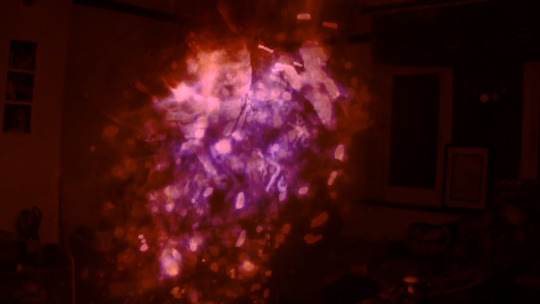
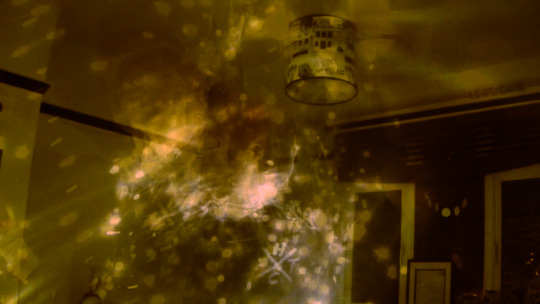
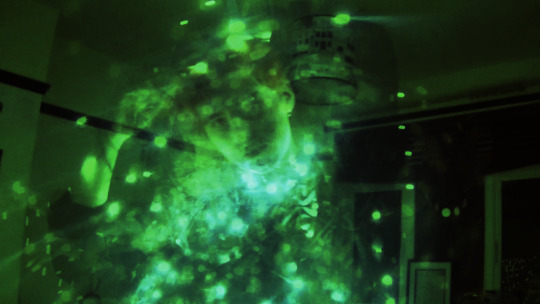
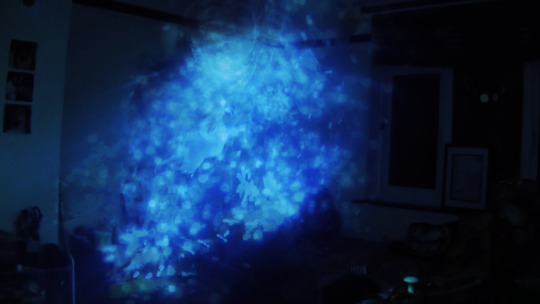
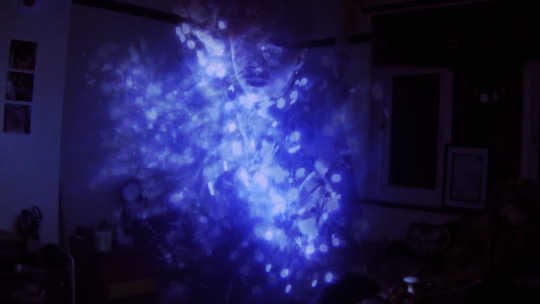
At first I approached the theme of transition and liminality with a somewhat melancholic eye - focusing on the confusion and discomfort that can arise from not quite being anywhere. However, without really intending it, these photographs take on a more positive view. When I look at these, I imagine myself in the process of transforming into something magical or otherworldly, which is empowering to me. They remind me of a video game character levelling up, transitioning to a more powerful version of itself. They evoke the idea that although we may be in an undefinable zone, it doesn’t mean that what is to come is all doom and gloom and that I am in the process of becoming a more empowered version of myself.
I have presented them in a rainbow to represent lgbtq+ pride. I myself am part of the lgbtq+ community and although I am constantly on a journey of self discovery in terms of identity. This has brought its fair share of personal conflict and struggle, its something I take a lot of pride in and openly being queer in my work is something that is empowering to me. I was inclined to have these presented to represent queerness because in my personal experience, the process of coming out as lgbtq+ was extremely liberating and these photographs present both the struggle and the freedom of self acceptance to me.
I made these in a similar way to my previous photography experiments. I wrapped fairy lights around myself and danced around my room. I filmed myself and then took frames from it to layer over each other in photoshop to create this glowing effect. I really like how they turned out and the way that they seem quite supernatural. It has got me thinking more about how I want to portray myself in my work and I am seeing a theme of me presenting myself as some kind of otherworldly ghost or spirit. This can relate to the feeling of being alienated or excluded from the world but in these pieces, I feel like I am evolving into something more powerful and beautiful. There could be a narrative between my black and white pictures and these more colourful ones where in which I am playing the roll of a trapped spirit, stuck between realms.
#art#fine art#artist#art student#photography#experimental photography#experimental#artists on tumblr#fine art photography#lgbt#lgbt art#pride#trans pride
0 notes
Text
My Process: Shooting
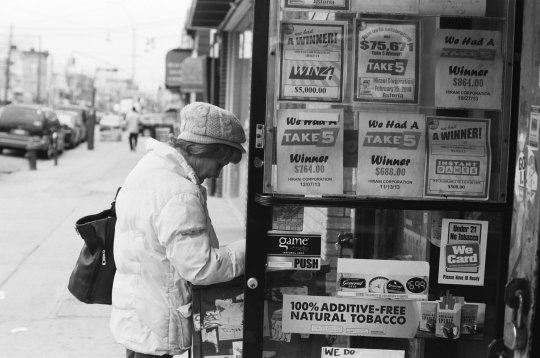
There is no “right way” or “best way” to do anything in photography, just different methods and different results. This is the first in a series of posts — shooting, developing, and printing — about my photographic processes as a film photographer.
The methods, equipment, and even shooting conditions I work with produce the results you see on my portfolio; so if there’s something about the look you want to pick up in your own work, or if you just want a starting point for working with film, this post might be helpful to you.
First, I’ll try to describe what’s going through my head as I shoot. I’m hoping this will give you a sense of my style and provide a background for the format and equipment choices I’ve made. Next, I’ll discuss how I choose different formats and then finally the specific equipment I use. This order is deliberate: my philosophy is to let your style and artistic goals determine your format and equipment choices, not the other way around.
A Photographic Headspace
Street photography, for me, is 85% hunting for images and 15% creating them. When I’m out with a camera, I’m looking at people, the built environment, geometry, objects, and their contexts; trying to pull them together in a composition that asserts a relationship between them. That relationship can be purely visual (lines and shapes, tones and textures); societal (class or cultural contrasts, the relationship of the city to its inhabitants); or narrative (depicting a story as it unfolds between people).
I first try to find that relationship by choosing neighborhoods, events, or landscape features to be near. I guess at what I might find there, anticipate momentary interactions and juxtapositions while walking around the area, and get an intuitive feeling for what’s going on in that space. I have to get my mind in that focused/searching/analyzing/intuiting mode to make my best images—it’s difficult to do it while distracted, hanging out with friends or while I’m on my way somewhere.
This is definitely not the only way to do street work. Two people I can think of off the top of my head whose methods are completely different from mine are Jamel Shabazz, who tries to break the ice and build a relationship with many of his subjects before the shot, and Bruce Gilden, who walks right up to passerby (really close!) without warning and takes a shot, flash firing right in their face. WNYC put out a couple of great short profiles of them that illustrate how they work:
youtube
youtube
Getting the composition right, for me, is largely a process of subtraction. I move around to eliminate distractions from my shot, to create frames or leading lines that take the eye where I want it to go, and to place the light and shadow where it emphasizes the qualities that I want to evoke (emotions, size, gloom, grit...) .
The process is not really that different for my architectural and cityscape work. I choose a location based on educated guesses of what I might find there, I look for relationships, and try to pull them together into a powerful composition. I find myself gravitating toward the liminal spaces between neighborhoods and along the coasts and edges of the city. Trainyards, power plants, and infrastructure pop out at me, as if I was some futurist or Charles Sheeler, except that they don’t represent something new, or hopeful, just something different from the shiny, homogeneous veneer of a finance- and real estate developer-dominated city. They are grandiose and full of textures and big geometric shapes. Their forms have a purpose other than slinging froyo and retail banking products.
Choosing a format
I work in 35mm, medium format, and 4x5 large format. They are all very different shooting experiences, getting slower and more deliberate with each size increase.
I choose 35mm for travel photography, for situations where bringing a medium format camera is too much of a burden, and anytime my primary concerns are:
Keeping weight and bulk low
Shooting quickly
Working in low light situations
I choose medium format whenever I can, since the larger negative is so much more luxurious than 35mm--and more capable, in terms of print size and sharpness, grain, and that certain depth it has. The vast majority of my current portfolio is medium format shot as 6x9.
I turn to large format when I can take my time with a shot and when I want to use movements, such as for:
Cityscapes
Architecture
Experiments with large format street photography
Eventually, portraits
I’m a newcomer to large format, so I’m still in an exploratory/learning phase with it. That means taking it out without much of a plan and just trying things.
Shooting and Exposure
I shoot fully manual so that I have complete control over all the artistic choices a camera can offer: exposure, depth of field, motion blur, and focus. This means I have to manage a certain amount of overhead to set the aperture and shutter speed, compose the shot, focus, and finally hit the shutter button. I have missed shots while doing this, but I prefer to miss a shot because I’m too slow than to blow it because the autofocus chooses the wrong subject or the aperture priority mode meters differently than I would. A slower process also keeps me thinking about my exposure choices, anticipating what subjects on the street will do, and evaluating and re-evaluating my compositions.
To miss as few shots as possible on the street or at events, I periodically check my metering and adjust the aperture (usually sticking with one shutter speed), even if I’m not about to take a shot. I meter on an object that is the closest available equivalent to 18% (middle) gray — usually my hand — in the same light as I expect my next shot will have. On very bright, sunny, summer days, there is usually one aperture/shutter speed combination for “in the sun” and another, four stops wider open, for “in the shade” that will cover most of the exposure conditions I’ll encounter. I can make small adjustments for anything in between. Down the spectrum from “bright but overcast” through sunset and dark rainclouds, the margin between the “full-light” exposure and the “shadow” exposure narrows to two stops or less.
Bottom line: if you meter for a “bright” exposure and a “shadow” exposure, you can use them as guideposts to make relatively quick adjustments with a manual camera.
My medium format cameras don’t have integrated light meters, so I use an old Canon s90, a compact digital camera which just so happens to have a spot metering function, as my light meter. I whip it out, meter on an object in the light I’m looking for (like I do in 35mm), and dial the settings into my camera. I could and probably eventually will buy a spot meter, but the s90 is small, light, effective, and already paid for. These cameras are further slowed down because:
They require more pulls of the film advance lever to go to the next frame
I have to separately cock the shutter before each exposure
There are only 8 shots per roll when shooting at 6x9 or 10 shots per roll at 6x7
With this setup, pockets are important. I’ve got one to hold my “light meter,” one to hold lots of unexposed rolls of film and another to hold exposed rolls of film and the roll of tape I use to keep them from unrolling. Ilford and Kodak, if you can read this, please put a sticker on the end of the strip that goes around an exposed roll!
My large format exposure method is a little more involved than my medium format method. After setting up the camera, I compose the shot, critically focus with the loupe, and meter with the s90, compensating for bellows factor. If I’m not in any rush (as I would be when there’s something in the shot that might move or I’m racing a sunset), I can meter all parts of the shot to decide where to place my blacks, whites, and grays (I don’t formally use the zone system, though I am starting to lean toward trying it). Even when I’m in a bit of a hurry, I’ll take a few moments to look at the shadows and decide how much shadow detail to preserve. You can’t rush an exposure—large format photography is inherently slow and it doesn’t make sense to risk wasting one of only ten shots I have.
Equipment Choices

image by Zokyo Labs
My 35mm camera is a Nikon F2AS with either a Nikkor-S Auto f1.4 6.5cm lens or a Zeiss Planar T* f1.4 85mm ZF. In the world of 35mm cameras, this is hardly the lightest or smallest setup, but the F2 series is famous for its toughness and reliability. Legend has it that salesmen in the 1970s would sell them by standing with their full weight on them, right there in the store. It works without a battery (except for metering); takes nearly all 1970s, 80s, 90s, and modern F-mount lenses (but doesn’t support autofocus, vibration reduction, etc); and is a joy of ergonomics and operation even 40+ years after manufacture. As for the lenses, I chose 65mm and 85mm focal lengths because I love a tight composition and I am rarely too close to a subject instead of too far away. It’s easy enough to take a step back if necessary. These lenses really make the subject pop from the background and offer beautiful blur rendition (my preferred term for “bokeh”) in out-of-focus areas, especially at wide apertures. They are portrait lenses, after all.
Some things you could do differently:
Save more weight and bulk by using a rangefinder – I prefer SLRs when possible, because I hate dealing with parallax error.
Use a camera with aperture and shutter priority capabilities – I just don’t trust them on older cameras
Use a camera with autofocus and integrated motordrive capabilities (e.g., the Nikon F4s) – I don’t need any more bulk or weight than I already have
In medium format, I have a Mamiya Universal Press with a Mamiya-Sekor f3.5 100mm lens and a 6x9 film back. I also have a Mamiya RB67 (not the Pro-S version) with a Mamiya-Sekor C f3.5 90mm and a 6x7 film back. Because of the larger negative for medium format film, these lenses are equivalent to slightly less than 45mm on a 35mm film camera. I would choose longer focal lengths if I could, but MUP lenses above 100mm don’t pop up that often on eBay and it doesn’t make sense to buy RB67 lenses when I don’t use it that often.
With this setup, compared to 35mm, I have to deal with:
Greater weight and bulk
Fewer exposures per roll
No integrated light meter
Manually cocking the lens
A tripod (RB67 only)
A left-right reversed image in the waist-level finder (RB67 only)
Parallax error (MUP only)
My equipment choices here were mostly based on cost and availability — eventually, I’ll try out an SLR that is much more portable than the RB67, like a Hasselblad or Bronica (with a prism finder!). That said, the MUP offers a decadent 6x9 negative that is amazing for portraits, very nice lens quality, a decent rangefinder that allows for quick composition, and a Polaroid back that shoots the recently-discontinued Fuji FP-100c instant film. The RB67′s lens is just fantastic, but the weight and the tripod make it difficult to choose over a large format setup. If I did much studio work, I’d probably find more use for the RB67.
My large format setup is a 4x5 Tachihara without a model name on it, but I believe it is a “Fiel Stand” [sic] from comparing it to photos. I use it with a Fujinon-W f5.6 210mm lens in a Copal 1 shutter. On 4x5, the 210mm lens is approximately equivalent to a 65mm lens on a 35mm camera, which is where I want to be. I also have a Linhof Technika III with a Schneider lenses in 90mm, 150mm, and 270mm telephoto focal lengths, but the weight is just too much to carry around. To take advantage of the wide angle Schneider 90mm for cityscapes, I might buy a board to re-mount it—Technika III boards are incompatible with the Tachihara (Technika IV and later are compatible).
To be honest, the exact equipment I use is not critical -- think about the focal lengths, negative sizes, and other capabilities (movements, macro focusing, motor drives...), and ask yourself what you need. Hope this has been helpful! Remember to check out my portfolio to get a sense of what kinds of images my setup produces.
#photography#film photography#35mm#medium format#large format#4x5#photo shoot#street photography#cityscape#photographers on tumblr#photo techniques#mamiya#nikon#fujinon
6 notes
·
View notes